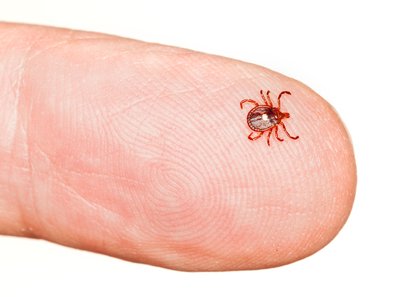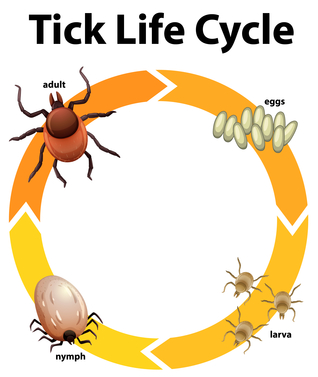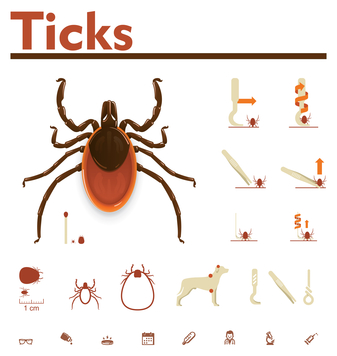Ticks Are Complex- Here’s Why And What You Can Do To Keep Safe
The eight-legged arachnids seem to outwit us all the time. Even at Dunkirk, MD, residents are encouraged to stay on high alert. The mild and cool winters that characterize the area are perfect for tick activity even during the holiday season. So, don’t let your guard down as you celebrate the closing of the year and look forward to the next.
Moreover, public health experts in the US report that there’s a need to keep safe. In the past, there were specific areas that were tick-prone. However, the experts recommend raising the bar of tick prevention and control regardless of your location. There are three main reasons for this as this post will reveal.
They’re difficult to monitor

Perhaps due to their size and other factors as well, it is not easy to track tick movement. This does not mean that there are completely no efforts toward finding out more about ticks. However, they are unique creatures whichever way you look at them.
“We have no national tick-monitoring network set up, though people have been quietly screaming for one for years,” says Richard Ostfeld, a disease ecologist, tick expert, and senior scientist at the independent Cary Institute for Ecosystem Studies in New York state. “If you’re monitoring the ticks, you’re monitoring the pathogens. And if you know where the ticks and tick-borne pathogens are, you can do a decent job of predicting where they will be soon and get out in front with campaigns of education and awareness.”
This is complex, because ticks are complex. The tiny arachnids are technically parasites, because they survive only by taking sips of blood from reptiles, birds, and mammals—including us. They have complicated life cycles that involve three iterations of slurping up a meal, dropping off for a nap, and metamorphosing into a new form. Their species are regional—limited to specific areas, though those lines are blurring—which means the pathogens they carry are regionalized too. Read more at Wired
They live long

You would hope that such a bug would die quickly so that it has fewer opportunities to harm you, but unfortunately, this is not the case. Ticks have the capacity to experience three consecutive winters.
Ticks are adept at transmitting disease in part because they live a long time, compared with other vectors like mosquitos. Most of the ticks that carry disease live two to three years and feed on the blood of multiple hosts across their four-stage life cycle (which progresses from egg to larva to nymph to adult). That gives them plenty of opportunity to pick up a pathogen that they can later transmit through their saliva when they bite someone.
The fact that ticks can tap the blood of an array of animals makes the ecology of tick diseases tricky to understand, Gilbert says. As an example, she points to the black-legged tick and the castor bean tick Ixodes ricinus, both of which spread Lyme disease. “They just feed on basically anything: lizards, birds, dogs, deer, everything, so it’s incredibly difficult to work out scientifically what are the main [things] driving these disease risks.” Read more at PBS
They’re Spreading Out

In addition to their ability to go unnoticed and live long, recent reports indicate that tick prevalence in the country is spreading out farther than it was previously. You are likely to find ticks in places that were previously known to be tick-free, and this is quite worrying.
Black-legged, or deer, ticks get the most attention from epidemiologists and ecologists because they carry two kinds of bacteria that cause Lyme disease. Lyme is the most common vector-borne disease in the US and the cause of a number of unpleasant symptoms from fever to joint pain, some of which can last for months.
These ticks are broadening their range from the eastern US in pretty much all directions, bringing Lyme as far west as Nebraska, perhaps, according to Dan Salkeld, a disease ecologist at Colorado State University. The CDC estimates that nearly half a million people now get Lyme disease in the US each year, and there’s been a steady rise in reported cases in the past three decades. (Tick surveillance gets better over time, which could explain some of the expansion.)
The expansion has epidemiologists worried. Tick-borne diseases already account for more than 75 percent of reported vector-borne diseases in the US, according to the Centers for Disease Control and Prevention. Making matters worse, the resources for tick surveillance and prevention are highly limited, compared with what we spend on, say, mosquito control. Read more at Vox
All is not lost though. You still can keep safe and avoid contracting tick-borne illnesses by keeping your yard safe.
Backyard Bug Patrol is the leading tick control company in Maryland that is ready to take on your tick prevention and control needs. We are passionate about ensuring your yard is safe and bug-free. Don’t take any chances as you wind up the year. You’ll have a more relaxed season knowing that you and your family members are all safe. Call us today and let’s get you safe!
